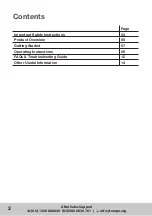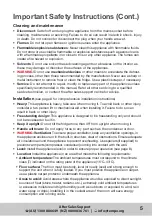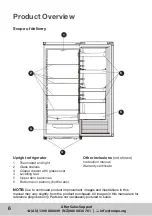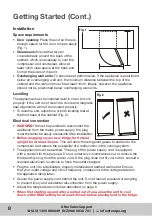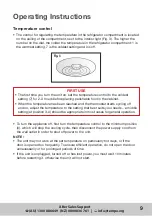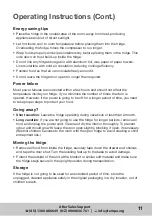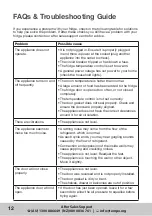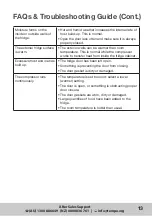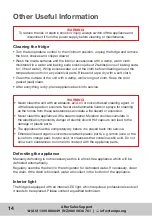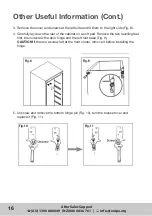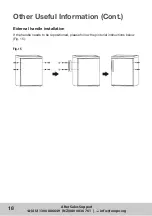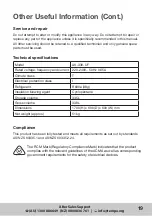
10
10
After Sales Support
(AU) 1300 886 649 (NZ) 0800 836 761 | [email protected]
Fresh food storage
The fridge compartment is suitable for short-term storage of all your fresh food. The
temperature inside the compartment varies depending on the amount of food stored
and the frequency of door opening. It is low enough to limit some bacterial growth, but
it is not suitable for long-term storage of perishable foods.
• The walls of the fridge are equipped with a series of runners so that you can position
the
glass shelves
to suit your individual storage requirements (Fig. 4).
• The
door balconies
in the fridge compartment are suitable for storage of food and
drink bottles, cans and jars. They may be placed at different heights: gradually pull a
balcony up until it is free, then reposition it as required (Fig. 5).
• In order to keep vegetables fresh in the
crisper
, make sure the glass cover
sits
firmly on top of the crisper drawer.
Operating Instructions (Cont.)
Fig. 4
Fig. 5
Fresh food storage tips
• Do not overload the fridge.
• Keep enough space around items for cold airflow.
• Do not block ventilation openings. Do not place items directly against the back wall.
• Let hot food cool down to room temperature before storing them in the fridge.
Otherwise the cooling capacity will be affected and power consumption increased.
Hot items may also affect the plastic parts inside the appliance.
• If necessary, wipe containers clean and dry before storage in the refrigerator.
• Thaw frozen foods in the fridge compartment to ensure safety and save energy.
• Cover cooked foods and use sealed containers or storage bags to prevent food
from drying out, losing its taste or taking on aromas from other foods.
• Store butter and cheese in airtight containers, or wrap them thoroughly.
• Make sure milk bottles are properly closed before storage on a door balcony.


